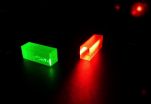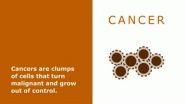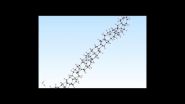(Press-News.org) Physicists at the University of Geneva (UNIGE) have succeeded in teleporting the quantum state of a photon to a crystal over 25 kilometres of optical fibre. The experiment, carried out in the laboratory of Professor Nicolas Gisin, constitutes a first, and simply pulverises the previous record of 6 kilometres achieved ten years ago by the same UNIGE team. Passing from light into matter, using teleportation of a photon to a crystal, shows that, in quantum physics, it is not the composition of a particle which is important, but rather its state, since this can exist and persist outside such extreme differences as those which distinguish light from matter. The results obtained by Félix Bussières and his colleagues are reported in the latest edition of Nature Photonics.
Quantum physics, and with it the UNIGE, is again being talked about around the world with the Marcel Benoist Prize for 2014 being awarded to Professor Nicolas Gisin, and the publication of experiments in Nature Photonics. The latest experiments have enabled verifying that the quantum state of a photon can be maintained whilst transporting it into a crystal without the two coming directly into contact.
One needs to imagine the crystal as a memory bank for storing the photon's information; the latter is transferred over these distances using the teleportation effect.
Teleporting Over 25 Kilometres
The experiment not only represents a significant technological achievement but also a spectacular advance in the continually surprising possibilities afforded by the quantum dimension. By taking the distance to 25 kilometres of optical fibre, the UNIGE physicists have significantly surpassed their own record of 6 kilometres, the distance achieved during the first long-distance teleportation achieved by Professor Gisin and his team in 2003.
Memory After Triangulation
So what exactly is this testing of quantum entaglement and its properties? One needs to imagine two entangled photons -in other words two photons inextricably linked at the most infinitesimal level by their joint states. One is propelled along an optical fibre (the 25 kilometres mentioned earlier), but not the other, which is sent to a crystal. It is a bit like a game of billiards, with a third photon hitting the first which obliterates both of them. Scientists measure this collision. But the information contained in the third photon is not destroyed -on the contrary it finds its way to the crystal which also contains the second entangled photon.
Thus, as Félix Bussières the lead author of this publication explains, one observes «that the quantum state of the two elements of light, these two entangled photons which are like two Siamese twins, is a channel that empowers the teleportation from light into matter».
From there, it is a small step to conclude that, in quantum physics, the state takes precedence over the 'vehicle' - in other words an item's quantum properties transcend classical physical properties. A step that maybe now one can take.
INFORMATION:
From light into matter, nothing seems to stop quantum teleportation
2014-09-21
ELSE PRESS RELEASES FROM THIS DATE:
Program predicts placement of chemical tags that control gene activity
2014-09-21
Biochemists working at the University of California, San Diego, have developed a program that predicts the placement of chemical marks that control the activity of genes based on sequences of DNA. They describe their analysis and report results from its application to human embryonic cells in a paper published in Nature Methods online September 21.
"All of our cells have the same blueprint, the same DNA, although they serve separate functions," said John Whitaker, lead author of the report. "Skin cells protect, nerve cells send signals, and these differences emerge because ...
Battling superbugs
2014-09-21
CAMBRIDGE, MA -- In recent years, new strains of bacteria have emerged that resist even the most powerful antibiotics. Each year, these superbugs, including drug-resistant forms of tuberculosis and staphylococcus, infect more than 2 million people nationwide, and kill at least 23,000. Despite the urgent need for new treatments, scientists have discovered very few new classes of antibiotics in the past decade.
MIT engineers have now turned a powerful new weapon on these superbugs. Using a gene-editing system that can disable any target gene, they have shown that they can ...
Immune system of newborn babies is stronger than previously thought
2014-09-21
Contrary to what was previously thought, newborn immune T cells may have the ability to trigger an inflammatory response to bacteria, according to a new study led by King's College London. Although their immune system works very differently to that of adults, babies may still be able to mount a strong immune defense, finds the study published in the journal Nature Medicine.
Our immune system is made up of several different types of immune cells, including neutrophils which play an important role in the frontline defense against infection, and lymphocytes: B cells which ...
Uncovering the forbidden side of molecules
2014-09-21
Researchers at the University of Basel in Switzerland have succeeded in observing the "forbidden" infrared spectrum of a charged molecule for the first time. These extremely weak spectra offer perspectives for extremely precise measurements of molecular properties and may also contribute to the development of molecular clocks and quantum technology. The results were published in the scientific journal Nature Physics.
Spectroscopy, the study of the interaction between matter and light, is probably the most important method for investigating the properties of molecules. ...
Magnetic fields make the excitons go 'round
2014-09-21
CAMBRIDGE, Mass-- A major limitation in the performance of solar cells happens within the photovoltaic material itself: When photons strike the molecules of a solar cell, they transfer their energy, producing quasi-particles called excitons — an energized state of molecules. That energized state can hop from one molecule to the next until it's transferred to electrons in a wire, which can light up a bulb or turn a motor.
But as the excitons hop through the material, they are prone to getting stuck in minuscule defects, or traps — causing them to release their energy ...
Engineered proteins stick like glue -- even in water
2014-09-21
CAMBRIDGE, MA -- Shellfish such as mussels and barnacles secrete very sticky proteins that help them cling to rocks or ship hulls, even underwater. Inspired by these natural adhesives, a team of MIT engineers has designed new materials that could be used to repair ships or help heal wounds and surgical incisions.
To create their new waterproof adhesives, the MIT researchers engineered bacteria to produce a hybrid material that incorporates naturally sticky mussel proteins as well as a bacterial protein found in biofilms — slimy layers formed by bacteria growing on a surface. ...
Cancer cells adapt energy needs to spread illness to other organs
2014-09-21
Want to understand why cancer cells metastasize? Think of Sparta.
Ancient Greek warriors were fed a special diet that better prepared them for the demands of battle on distant fields. Cancer cells that metastasize may do the same thing according to a new study revealing previously unknown differences between cancer cells that continue to grow at the original tumor site, and those that travel to other organs.
Given that a cancer cell's unyielding ability to metastasize is the primary cause of cancer-related death, understanding how they successfully migrate can be lifesaving.
Scientists ...
Stanford researchers create 'evolved' protein that may stop cancer from spreading
2014-09-21
VIDEO:
Early but promising tests in lab mice suggest that a bioengineered 'decoy' protein, administered intravenously, can halt the spread of cancer from the original tumor site. Years of subsequent tests...
Click here for more information.
A team of Stanford researchers has developed a protein therapy that disrupts the process that causes cancer cells to break away from original tumor sites, travel through the blood stream and start aggressive new growths elsewhere in the body.
This ...
Smallest possible diamonds form ultra-thin nanothreads
2014-09-21
VIDEO:
For the first time, scientists have discovered how to produce ultra-thin 'diamond nanothreads' that promise extraordinary properties, including strength and stiffness greater than that of today's strongest nanotubes and polymers....
Click here for more information.
For the first time, scientists have discovered how to produce ultra-thin "diamond nanothreads" that promise extraordinary properties, including strength and stiffness greater than that of today's strongest ...
New cancer drug target involving lipid chemical messengers
2014-09-19
PHILADELPHIA — More than half of human cancers have abnormally upregulated chemical signals related to lipid metabolism, yet how these signals are controlled during tumor formation is not fully understood.
Youhai Chen, PhD, MD, and Svetlana Fayngerts, PhD, both researchers in the department of Pathology and Laboratory Medicine at the Perelman School of Medicine, University of Pennsylvania, and colleagues report that TIPE3, a newly described oncogenic protein, promotes cancer by targeting these pathways.
Lipid second messengers play cardinal roles in relaying and amplifying ...





